06 Metals and Ceramics 3
1/57
There's no tags or description
Looks like no tags are added yet.
Name | Mastery | Learn | Test | Matching | Spaced |
|---|
No study sessions yet.
58 Terms
Characterise Aluminium (7)
Third more common material on Earth
Low density
Good strength (70 - 100 MPa) (Good tensile strength to density ratio: Al > Fe (200 MPa))
High resistance to weather (corrosion resistance due to Al2O3)
Good formability and machinability
High electrical conductivity (Good electrical conductivity to density ratio: Al > Cu)
High thermal conductivity
Characterise Al wrt its alloys (2)
Wrought alloys: Mn, Mg, Cu
Cast alloys: Si, Cu, Mg
Characterise Copper (7)
Available as Cu ore
Very high electrical conductivity (only after Ag)
High thermal conductivity
Strength increased through cold deformation (but still low tensile strength (less than 440 MPa))
Formable
Weldable and solderable
High corrosion resistant (patina)
Applications of Copper (5)
Electrical applications
Mechanical engineering
Chemical engineering
Civil engineering
Coins
Which metals is copper usually alloyed with? (4)
Zinc (Brass, more than 50 wt % Cu): higher strength, higher corrosion
Tin (Bronze more than 60 wt % Cu): higher strength, hardness, corrosion resistance
Nickel: weldable, high restance against erosion, corrosion, cavitation, high stength (more brittle)
Al
Mn
Si
Characterise Magnesium (12)
High availability
Lowest density among metals (1.74 g cm-3)
Low strength
Low E
Medium cost
Excellent machinability
Good mechanical damping
Good castability
Low corrosion resistance
High reactivity
Not used for construction
Hexagonal Centered Packed: poor formability, low toughness, high notch-sensitivity
Where is Mg used? (3)
Gearboxes, housings, etc
Helicopters
Airplanes
Which metals is magnesium usually alloyed with? (4)
Aluminium, zinc: increase toughness, decrease notch-sensitivity
Manganese: increase corrosion resistance
Cerium, thorium: increase strength at high temperature (up to 300°C)
Zirconium: grain refinement, formability and strength
Characterise Titanium (9)
Fourth most common material in Earth’s crust
Cost effective obtainment since mid 20th century
Pure and with up to 20 wt % of other elements
High stength (up to 1400 MPa)
Low density
High cost
HIgh working temperatures
High corrosion resistance (oxide layer)
Ductile and forgeable
Varying lattice structure
Use in Aerospace of Ti (5)
High performance engines
Landing gear components
Airframe structure
Spacecraft and rocket structures
Helicopter structures

Discuss inclusion of oxygen in Ti alloys (3)
Dobled tensile strength
Reduced formability
Reduced corrosion resistance
Which additives is α-titanium normally alloyed with? (4)
Aluminium
Oxygen
Nitrogen
Carbon
Characterise α-titanium (4)
Low to medium strength
Low density
Good weldability
High warm and cold stability of mechanical properties
Characterise β-titanium (4)
Higher strength
High vibrational resistance
Higher cold-formability
Higher density
Characterise α + β-titanium (4)
Two phase alloy (two different unit cells)
High specific strength
Hardenable
Lower strength than β-titanium but better specific strength
Characterise Nickel (7)
0.02% of Earth’s outer silicate crust
FCC (high formability)
High strength
Very high density
High cost
Very high working (service) temperatures
Ferromagnetic
Uses of Nickel (4)
Stable properties at high service temperatures
HP compressor blades
Combustion chamber
Turbine blades
Which materials is Nickel most alloyed with? (5)
Copper
Chromium
Cobalt
Iron
Molybdenum
What are Nickel-based superalloys? (7)
Alloys with extremely high temperature stability
At least 50 wt % Ni
Inconel
Used for turbine engines
High strength
Long fatigue life
High creep, stress rupture and corrosion resistance at high temperatures
How are ceramics classified? (3)
Consumer ceramics (Silicate + Oxide)
Functional ceramics (Silicate + Oxide + Non-oxide )
Structural ceramics (Oxide + Non-oxide)
How are ceramic materials created?
Formed out of Ceramic Raw Mass
Formed element sintered to reach finished element

What forming processes are there for ceramics? (5)
Hot isostatic
Cold
Hot
Dry
Slip casting (non-oxide ceramics)
Plasticizing (often addition of thermoplastics) → extrusion/injection molding


What is pre-sintering?
“Heat treatment“ to a lower temperatures than final sintering

What is green machining?
Process that increases manufcaturing precision
Allows complex modifications of geometry without influencing forming process

What is sintering?
Heating the material up up to a temperature dependant of the material

What is hard machining?
Post-processing machining to achieve higher dimensional precission and surface quality
How is the structure of silicate ceramics after sintering?
Glassy and crystalline
How is the structure of oxide and non-oxide ceramics after sintering?
Polycrystalline
What happens after sintering wrt the overall structure? (2)
Pores and inclusions limit grain growth in the atomic structure
Pores, inclusions and manufacturing defects dominate properties of ceramics
Which kind of bonds is displayed by the atoms of a cermaic material?
Fully covalent
Partial ionic
Fully ionic
What is a coordination number?
Number of anions surrounding one cation
What are the usual coordination numbers for ceramics?
4
6
8
What is the ralation between the ratio of radii and the coordination number?
The higher the ration of radii, the higher the number of possible cation-anion connections (coordination number)
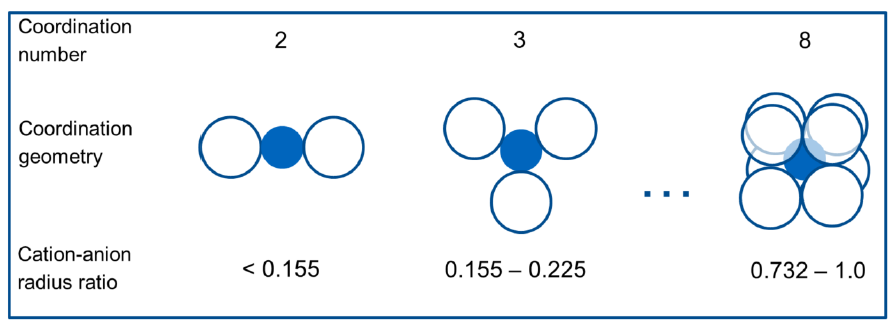
General Disadvantages of Ceramics (7)
Mechanical properties inferior to metals
Disposition to brittle fracture with low energy absorption
High scatter of mechanical strength
Strength depedant of item volume and surface
Decrease of strength at static load (static fatigue)
Very low thermal conductivity
Low thermal expansion
What is the reason for the mechanical and physical disadvantages of ceramics? (4)
Inhomegenities
Pores
Inclusions
Micro cracks
Physical and mechanical properties of ceramics (3)
High hardness
Low electric conductivity
Ofter high corrosion resistance
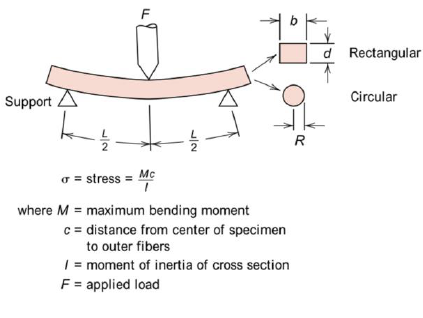
How is a ceramic charaterized?
With a flexural strength test (actually measures the maximum shear but whatever)
Formulae in Cheat Sheet
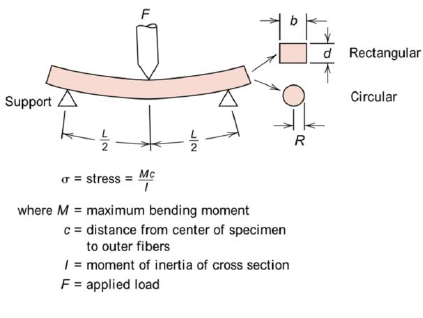
Why is it difficult to apply a regular tensile test to a ceramic material? (3)
Difficult specimen preparation (complicated geometry)
Brittle materials difficult to grip
High precission required
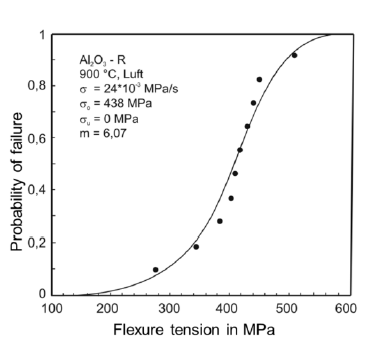
How is the probability of failure of a ceramic material modeled?
Via the Weibull distribution and using a flexure tension test
Formula in Cheat Cheet
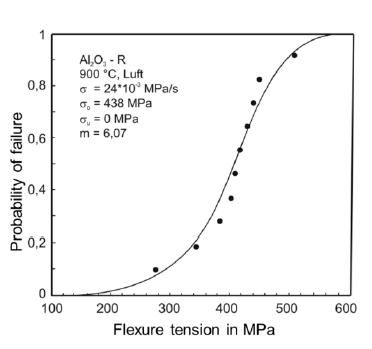
Which rules are to be followed for constructions with ceramics? (5)
Avoid sharp edges
Avoid abrupt cahnges of cross section
Pressure load prefered over tensile load
Avoid high edge pressure
Consider different thermal expansion coefficients
Characterise Al2O3 (6)
Common
Good mechanical and chemical properties
High hardness
Disposition to creeping at high temperatures
High thermal expansion
Medium thermal conductivity
Characterise Si3N4 (5)
Group of ceramics: dense silicon nitrides
Suitable for high temperature applications up to 1400 °C
Polyphase material with amorphous or semi-crystalline proportions up to 30%
Tailorable
Los resistance against aggresiva chemical solutions
Characterise B4C (8)
Boron Carbide
Third hardest material in the world
Extreme high hardness at high temps (stable up to 1500 °C)
Non-oxide and non-metallic
Only machinable with diamond tools
Thermal conductivity decreases with increasing temperature
Los oxidation ressitance
High chemical resistance
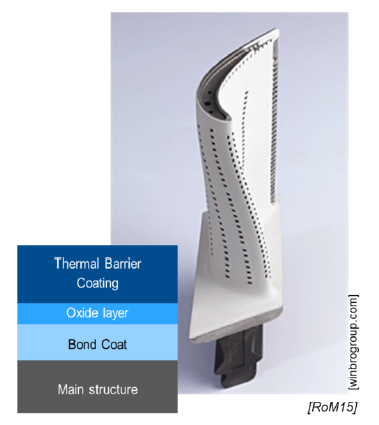
What does TBC stand for?
Thermal Barrier Coating
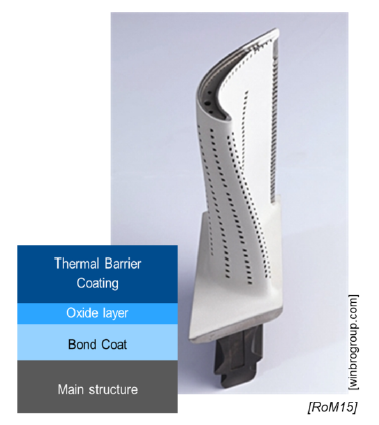
What is TBC used for? (5)
Thermal isulation via ceramic coating
Metallic bond coat
Wear and corrosion resistant due to high proportion of Al
Applied by plasma sprying or electron beam vapor deposition
Normally used for gas turbines
SQ: For which applciations are nickel-based superalloys typically used in aerospace engineering?
Turbine engines
Wherever thermo stability is needed
Higher stability of material leads to higher operation temperature of engine and thus to higher thrust
SQ:What is the main advantage of α-titanium over β-titanium?
Low density
Good weldability
High warm and cold stability of mechanical properties
SQ: Why is Al often preferred over Mg for lightweight design, even though it has higher density?
Al displays better mechanical properties, specially tensile strength
Mg is more reactive than Al
SQ: Why is copper not commonly used for aerospace structure? In which engineering discipline is copper used pedominantly instead?
High denisty
Inferior strength to weight ratio
Cost
Electrical engineering
SQ: How are ceramic materials classified?
Silicate ceramics
Oxide ceramics
Non-oxide ceramics
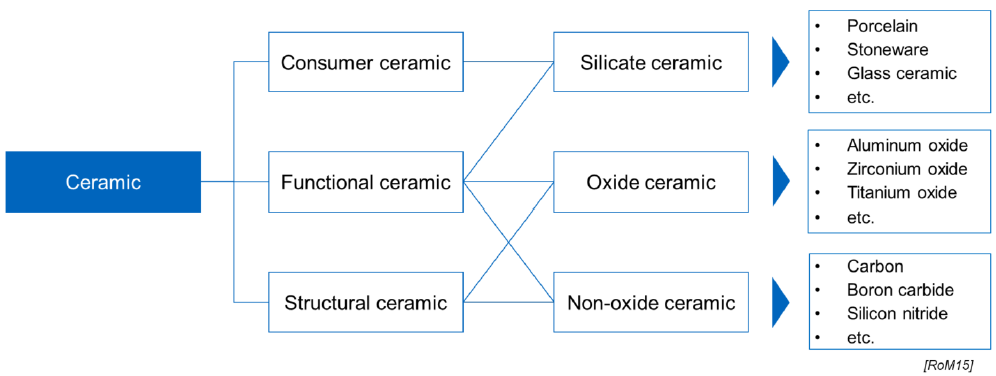
SQ: Name the differences between silicate ceercamic, oxide and non-oxide ceramics according to their crystal structure after sintering
Silicate: glassy and crystal phases
Oxide and non-oxide: polycrystalline structure
SQ: What should be considered in the design process of ceramic products?
Ceramics raw material
Final geometry
Quantity of pieces
SQ: What characteristic of ceramic materials is of special interest for aerspace applications?
Thermal insulation
SQ: Why is the mean value of strength insufficient for characterization of ceramic materials?
Due to considerable deviations due to pores, inclusions, inhomogenities, micro cracks, brittleness
Failure at 0.1% strain
SQ: Describe the setup of a thermal barrier coating
Main structure
Bond Coat (high Al proportions)
Oxide Layer (Al)
TBC (Zircon or Yridium ceramics)
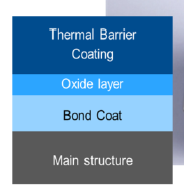
SQ: Why are turbine engine parts with high temperature requirements typically not made form massive ceramic materials?
Due to inferior mechanical properties of ceramics, like brittleness or poor eleongation to failure
SQ:Describe the crystal structure of predominantly ionic ceramics
Oppositely charged ions to achieve neutral crystall over the whole material body
Accomodation within lattice structure driven by and radii ration (cation to anion radii ratio) and coordination numbers
SQ: What is the difference between green machining and hard machining of ceramics?
Green machining: presintered material
Hard machining: sintered material